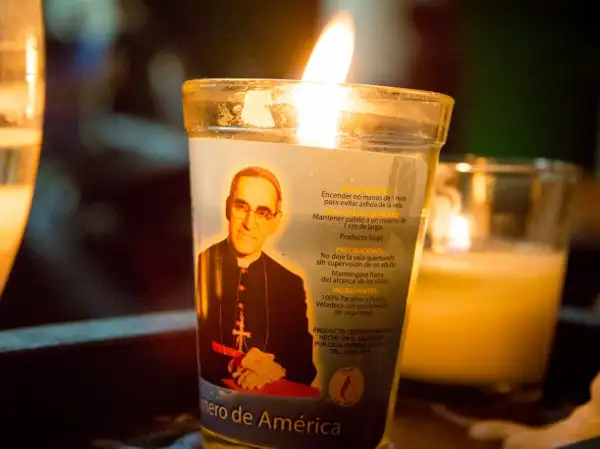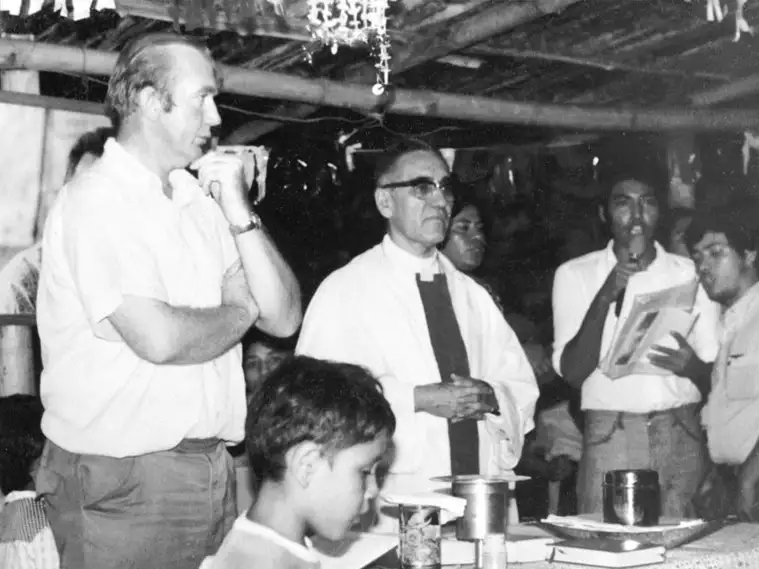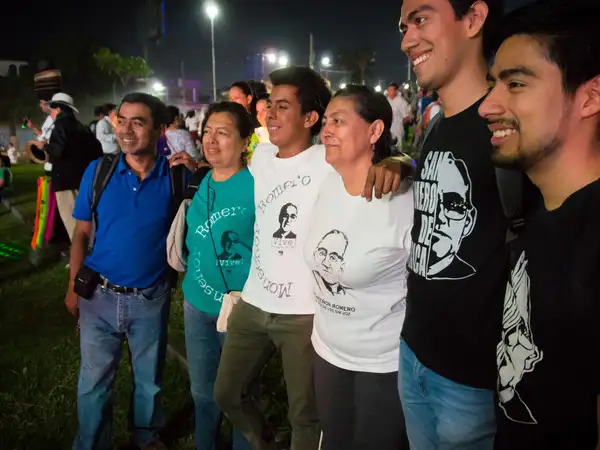

A beautiful candle lit in memory of Blessed Oscar Romero.
Two extraordinary men who inspire the work of CAFOD were proclaimed saints on 14 October 2018. Saint Pope Paul VI and Saint Oscar Romero were great advocates for the poorest people in our world. Their canonisation was especially meaningful for CAFOD.
One of these men was Pope, the other an Archbishop. But that is not why they were canonised. So what does it take to be declared a saint? Here is a quick reminder of some of the main steps along the way.
What is a saint?
For Catholics, a saint is someone who has lived an exemplary life of holiness, and whose soul is in heaven. They have shown “heroic virtue in the service of Christ”. The saint is given a feast day and can be venerated by Christians everywhere.
Pope Paul VI encouragingly said that “holiness is within everyone’s reach” and we only need two elements to become saints, “the grace of God and good will”.
The official recognition of a saint by the Church, however, is a notoriously long and complex process.
Steps to sainthood
The reputation of holiness
The path to sainthood all starts with what ordinary people think. The first step is “the opinion that has spread among the faithful” that a person has lived a life of integrity and Christian virtue. The alternative is to have been martyred.
For thousands of poor Salvadorans, Blessed Oscar Romero met both these criteria. They loved and revered him in life, and he died for his beliefs. As his friend Julian Filochowski of the Archbishop Romero Trust puts it, the people of El Salvador canonised Oscar Romero in their hearts upon his assassination in 1980. Institutions, however, are more difficult to convince – his cause took 38 years.
Find out more about Romero's life
The Servant of God
Next, the diocesan bishop gathers information about the person’s life and writings. This is sent to the Congregation for the Causes of the Saints in Rome. If the case is accepted, the first title is earned: Servant of God.
Venerable
More investigation follows, to establish “moral certainty” over whether the person had the heroic Christian virtues or was truly a martyr. The Pope then awards the second title: Venerable.
Oscar Romero and Paul VI were both prayerful and scholarly men, yet active in the world when called on to display their Christian virtues in heroic ways. When they met in 1978, the Pope recognised the courage in his fellow defender of the poor, who was battling the situation of poverty and oppression in El Salvador, and warmly encouraged him to continue “with courage, with patience, with strength, with hope”.
Beatification
Next comes beatification, when a person is declared ‘Blessed’. There are two pathways for this:
For martyrs, no miracle is required.
For everyone else, there must be a miracle attributed to their intercession.
Pope Francis unblocked the beatification of both men, by approving a miracle attributed to Pope Paul VI and by formally accepting that Oscar Romero died as a martyr. Pope Francis has described his predecessor as a “tireless Apostle,” who offered a “humble and prophetic witness of love for Christ and his Church”, while he calls Blessed Oscar Romero one who "constructed peace with the force of love".
The final miracle
For a martyr to become a saint a miracle attributed to their intercession is needed. Other candidates require two miracles. Early in 2018, miracles were approved for the Pope and the Archbishop, clearing the way for their elevation to sainthood.
The great papal Mass containing the Rite of Canonisation took place at St Peter’s on 14 October. Now, all Catholics are able to venerate these two men who shared a vision of a world of peace and justice, where the poor are no longer excluded, but instead fully participate in a Church of the poor and for the poor.



